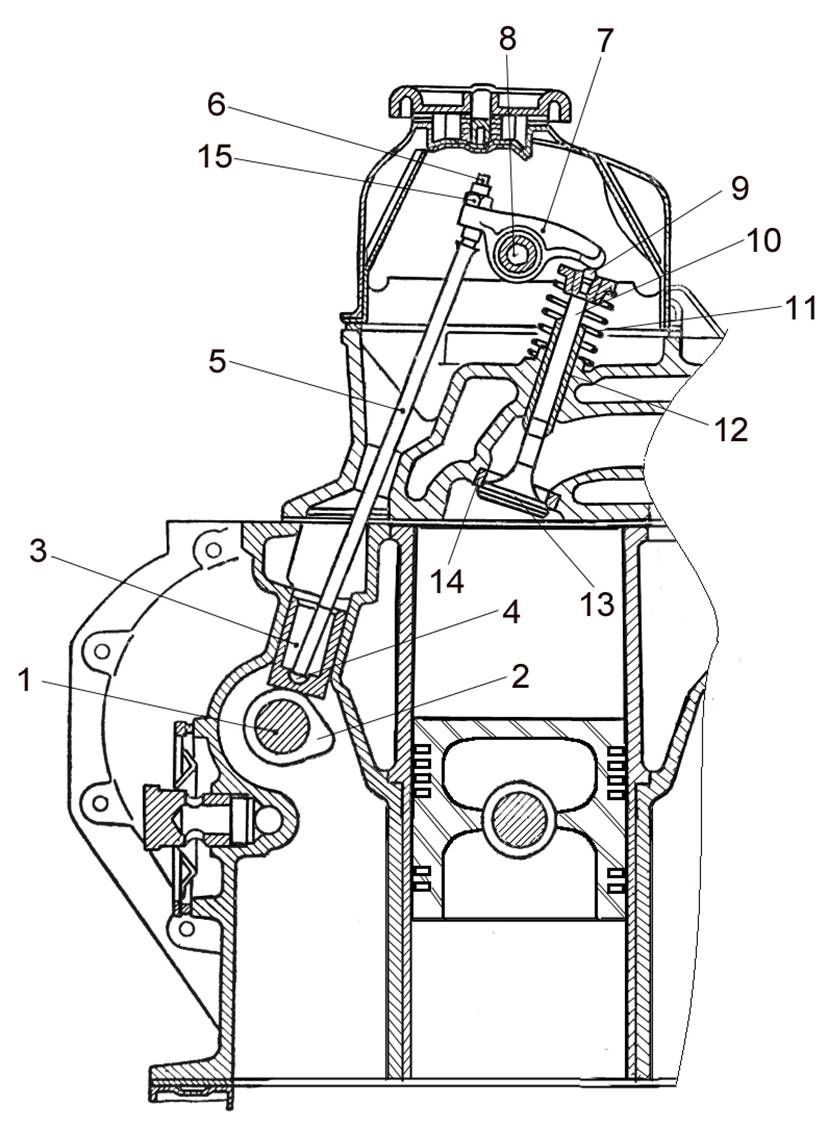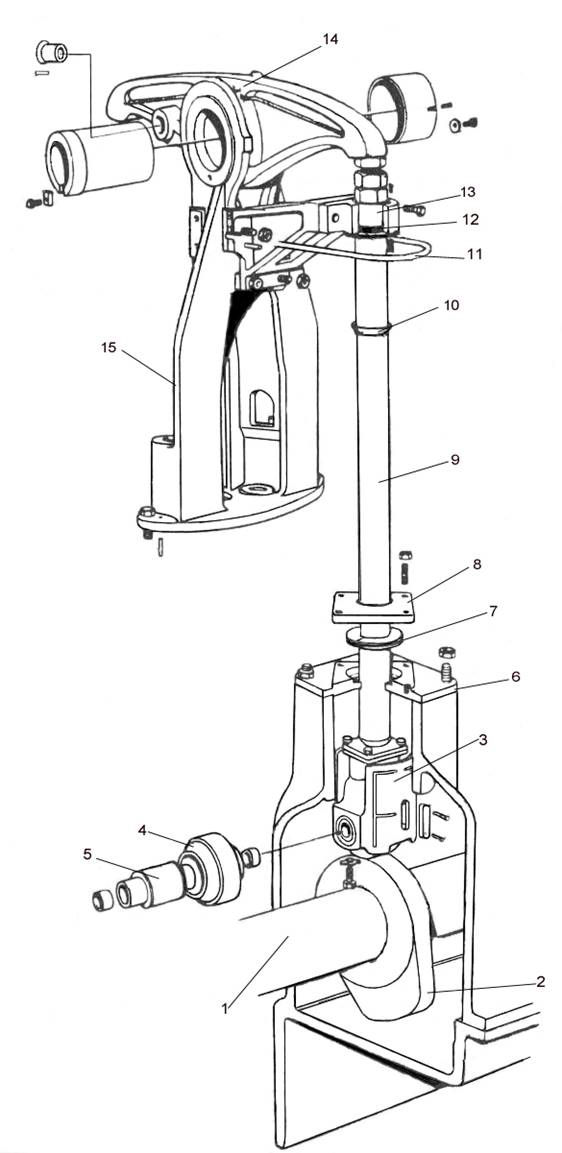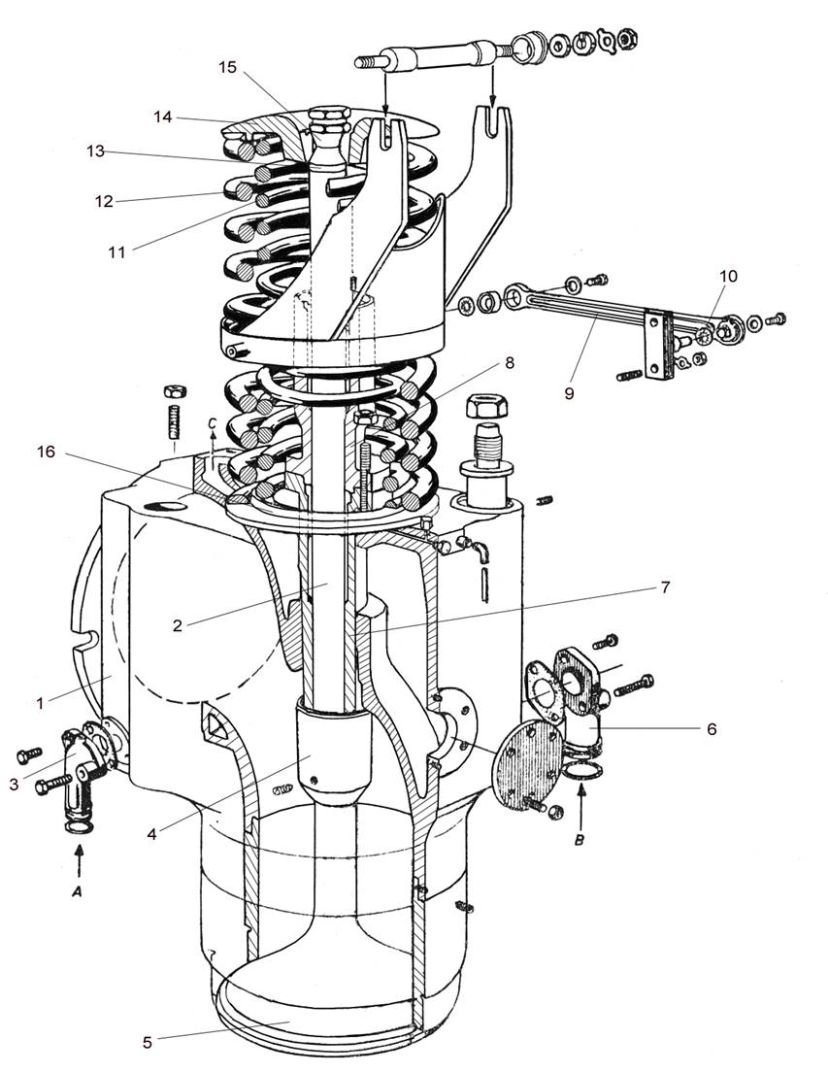1. Arborele cu came
2. Camă
3. Tachet
4. Capăt sferic
5. Tijă împingătoare
6. Şurub de reglaj
7. Culbutor
8. Axul culbutorului
9. Capătul supapei
10. Tija supapei
11. Arcul supapei
12. Ghidul supapei
13. Talerul supapei
14. Scaunul supapei
15. Contrapiuliţă


